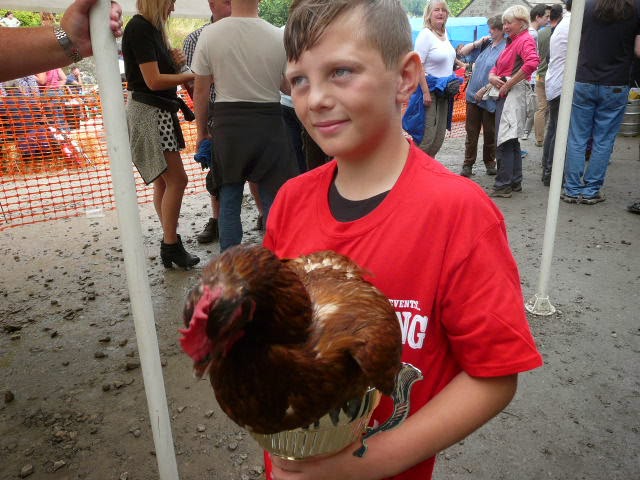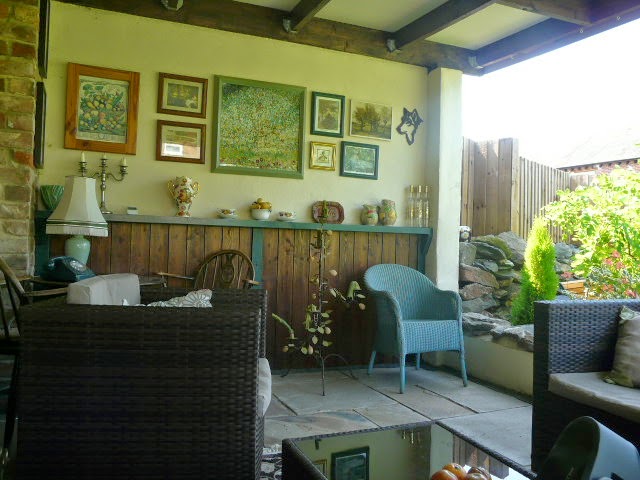
8 reasons to visit Holland and not go anywhere near Amsterdam
“You’re going back to the Netherlands?”
“Isn’t it a bit boring?”
“Amsterdam is great but the rest is flat and uninteresting, isn’t it?”
“I’ve been to Amsterdam, but I’ve never thought about going to the rest of the Netherlands.”
These are the kinds of responses I received when I told friends I was returning to the Netherlands. It has become a love affair for me. Me who’s always gravitated towards mountains is now enchanted by this flat, flat country. And I’m not bothered about going anywhere near Amsterdam. Here’s why.
1. Great cycling
This is the thing. Cycling is civilised in the Netherlands. You can go off-road without worrying about getting a flat tyre because the cycle paths are surfaced. This also means more speed. Neither do you need to worry about being knocked off your bike by a lorry, sprayed by a car on a rainy day, deafened by traffic or choked by exhaust fumes. And where there are no cycle paths, the roads are quiet. Plus the cyclist has priority. The routes are surprisingly varied and interesting too. There are undulating dunes; coastal forest; roadside canals; country lanes in the polders; wetlands, dykes and seawalls, plus pretty towns and villages – all with plenty of cafés and restaurants along the way for a pit stop.
2. Great beaches
Wide, white beaches that stretch out for miles - the Netherlands has some of the best beaches in Europe. I’ve not been in summer yet, but even in autumn and winter the beaches are busy with walkers, kite flyers and land yachters. The Dutch love the outdoors and a bit of cold weather doesn’t put them off. Then there are the beach pavilions …
3. Beach café culture - the strandpaviljoen
From the land, the beaches are hidden from sight because of the soaring dykes, so opening a café with a view isn’t easy. The solution? Build the café right out on the beach. Almost every beach in the Netherlands has the ubiquitous ‘strandpaviljoen.’ Built into the dunes or right out on the sand on stilts, the beach pavilions have shabby-chic sophistication, beach-hut cool and New England style, combining casual soft furnishings, distressed furniture and decorations of candles, pebbles, shells and driftwood. Not only do the beach cafés look good, they also serve good food and a decent selection of Dutch beer. And how about a beach pub crawl? We stayed near Callantsoog, where there were three beach pavilions side by side. Crawling through the sand a few yards, with the sea roaring in your ear, is much more appealing than crawling through hard and dirty city streets!
4. Islands
Yes, islands. The Wadden Sea islands stretch out a trail of droplets above the mainland: Texel (pronounced Tezel by the locals), Vieland, Terschelling, Ameland and Schiermonnikoog (with a few sandbars in between). In the summer the boats plough across to the islands from the mainland, and from one island to the next. This trip, I only visited Texel, but I can’t wait to return in the summer so I can island-hop with my bicycle. Texel is a mini Netherlands, with the best of the Dutch landscape compacted into a small area: shoreline and seawall, coastal woodland, mountainous dunes, long, golden beaches and wetlands packed cheek-to-jowl with waders – which brings me to the birdlife.
5. Birdlife
Black storks, gannets, spoonbills, oystercatchers, ducks of all descriptions, Northern lapwings, greenshanks and redshanks. I’d never seen so many birds packed into one small area as I did on Texel. And the large number of over-wintering birds was striking on the mainland as well. Because of the flatness of the land, your eye is level with the sky – and the birds that inhabit it. I’m not a twitcher, but because the birds in the Netherlands are always in your line of vision, you become more aware of them – crossing in front of you, swooping and curving into constantly changing patterns; migrating to feeding grounds.
6. Charming towns and villages
So Amsterdam is charming with its tall narrow buildings (a building tradition that came about because the Dutch were taxed according to the width of their houses) lining the canals and the narrow streets. And of course, there are the equally charming sit-up-and-beg bikes that come in every shape, colour and size. Actually this describes most towns in the Netherlands: Try the historical towns of Middelburg, Goes and Zierikzee in Zeeland, Alkmaar in North Holland or Utrecht in its eponymous province for starters, but every part of the Netherlands has its share of historical towns and villages. Check out the old fishing villages on the Markermeer and the Ijsselmeer. Then there’s the Netherlands’ answer to Venice – the car-less Giethoorn, a village of canals, boats and thatched cottages.
7. Language heaven
Almost everyone speaks English - and probably another couple of languages for good measure. When I ask the Dutch whether they’d like me to speak in German or English, they often shrug their shoulders and say they don’t mind. I usually speak German for the practise, but the Giethoorn waiter was very disappointed that I’d run out of languages after English and German. He’d hoped to show off his French, Spanish and Arabic. While Dutch people feel obliged to learn a bit of the language when they go somewhere new on holidays (the same waiter told me), my understanding of Dutch is at best receptive. But it’s great fun working it out as it’s a halfway house between German and English.
8. Koffie en Koek
I’ve never had a bad cup of coffee in the Netherlands and the apple cake, standard in most Dutch cafés, is second to none.





























